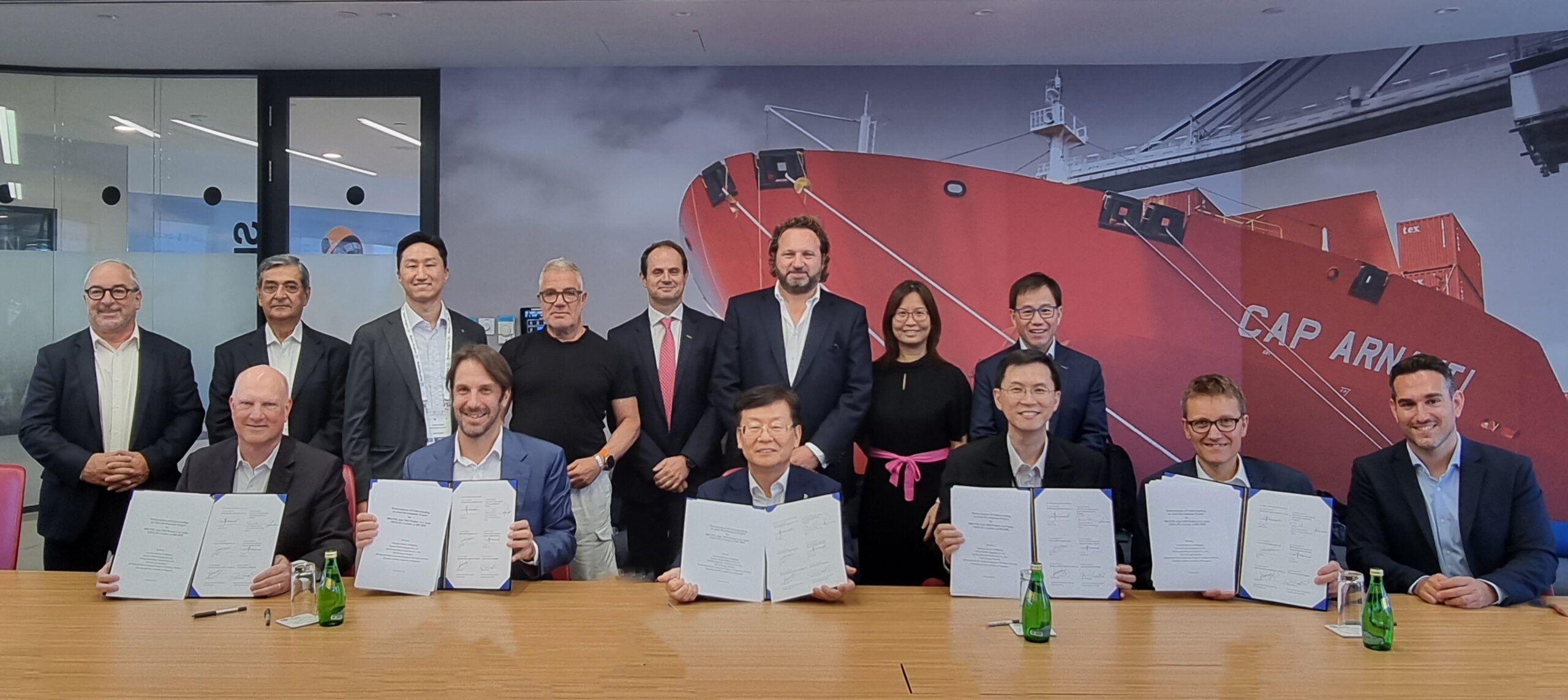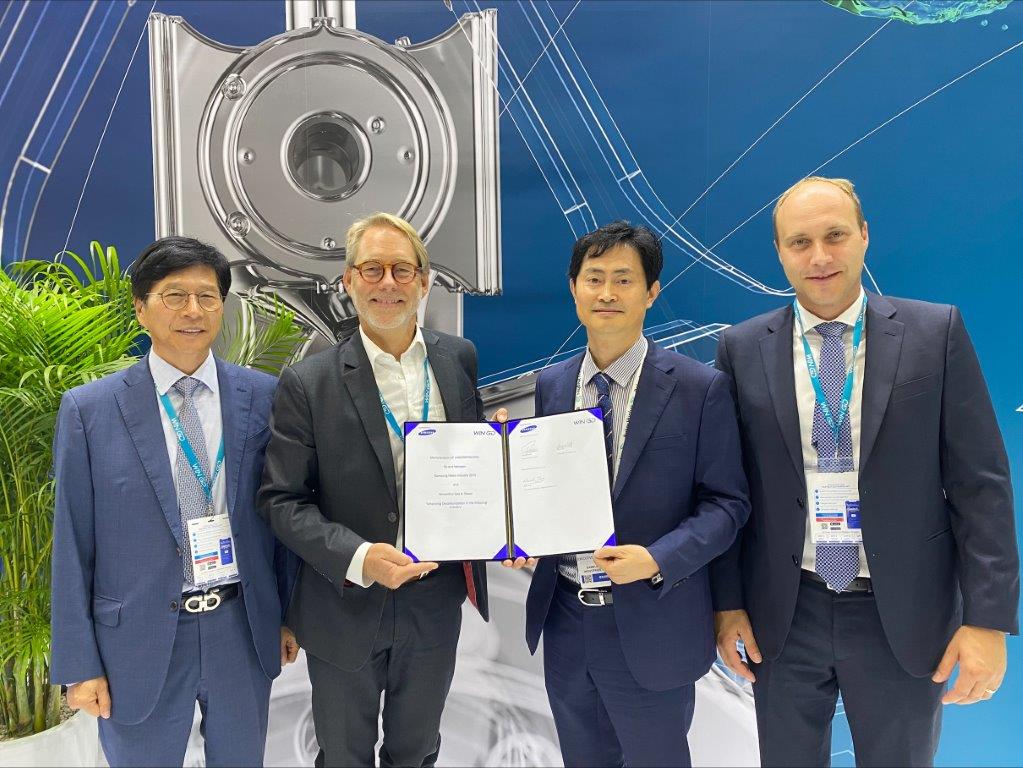In a second installment of her assessment of shipping’s strategy towards a zero carbon industry Sofia Furstenberg Stott asks the questions about whether it can take a systems wide approach to the problem.
Decarbonisation of the shipping industry is one of the hot topics, with initiatives ranging from the establishment of the Getting To Zero Coalition, the Maersk announcements of the release of a zero-carbon service using certified biofuel, and the Amplifier project release, Towards Net Zero, initiated by the forward-focused German shipowner Christian Oldendorff.
And last week, the EPSC (European Political Strategy Centre) released a strategic note for Clean Transport at Sea, setting a course for European Leadership, including the confirmation of Ursula von der Leyen’s ambition to include maritime transport under the EU’s Emission Trading System.
Overall, the options for shipping decarbonisation, from a fuel perspective, seem to circle around ammonia, carbon alcohols, hydrogen and biofuels. To this the strategic note from the EPSC agrees, but adds that many of these new fuels are not yet commercially available. In my view, fuel traders and strategists alike, have now a new set of complexity to consider, as they never before have had to assess the CO2 impact of the fuel they are purchasing. To only look at whether a fuel is commercially available or not, is in this context an over-simplification. Because it will soon need to be sustainably sourced too.
In all this, there is a new lingo emerging which some of us may struggle to fully comprehend. One of these new terms is net-zero. What does it mean? The term alludes to the amount of additional greenhouse gases (counted as carbon) being released to the atmosphere after a fuel has been burnt in a ship’s engine. Currently, a ton of ship’s fuel (be it MGO, MDO, LSFO, HFO) roughly releases 3.2 ton of fossil CO2 to the atmosphere. We all know the total amount by now, don’t we; that international shipping emits around 3 % of global CO2 emissions, on par with Germany, EU’s largest economy. Any of these short-listed renewable fuels also emit CO2, either upon combustion or indirectly during production, unless it has been produced through the use of a carbon-neutral and renewable source, like wind power. Hence, a truly carbon neutral fuel does not add any additional CO2 than what was already in circulation, thus the term net-zero.
Hence, a truly carbon neutral fuel does not add any additional CO2 than what was already in circulation, thus the term net-zero.
Now, while the front-runners are currently exploring commercially and technically feasible fuel- and fuel supply options, new stakeholders to the maritime industry are gearing up to become eligible candidates for supplying of these new maritime fuels. The prospects are very attractive: Amplifier’s Towards Net Zero project has calculated how much ammonia and hydrogen that would be necessary, should the entire current North Sea and Baltic Sea fleet shift to either of these fuels: 30 m tonnes of ammonia in annual consumption, or 4,6 m tonnes of hydrogen. This corresponds to 20% of global ammonia production and 170%-150% of current EU production (depending on what source you trust) and 4% of global hydrogen production. But what about the carbon impact for these new fuels?
According to the Energy Transition Commission, a group of industry experts funded by the UN Foundation, the Rocky Mountain Institute and the European Climate Foundation, estimate that for ammonia, on European average, the production of one tonne of ammonia currently results in 2 tonne CO2 being emitted to the atmosphere. Technically speaking, in order to be on par with HFO from a CO2 perspective, ammonia production needs to come down to a so-called carbon intensity below 200 g CO2/kWh.
Still with me?
OK, moving onward: So called green ammonia, which is produced with hydrogen generated through electrolyses of water (hydrolysis) powered by renewable electricity, constitutes only a minute portion of all ammonia produced world-wide; in Europe these facilities are limited to a few locations in Scandinavia and France. By 2030, the forecasts predict that perhaps 10% of the total European production could be net-zero. What does this mean for shipping?
Well, let’s start with the simple calculation based on the facts at hand. Should the entire production of net-zero ammonia in the EU be earmarked for shipping, less than 7% of the North Sea and Baltic Sea fleets could operate on this fuel by 2030. Since 7% is a fairly good penetration of the market in only 10 years time, perhaps that it not such a gloomy outlook. But the food and agriculture industries who use ammonia as fertiliser also need to decarbonise, and you could thus assume there will be high demand for green ammonia from these industries too.
Is it a better idea then, to perhaps just go for biofuel? Well, this is where the system perspective is really going to give you a headache. Aviation needs to decarbonise too. And currently biofuel looks like the best candidate to accomplish such feat, as this can provide a liquid carbon-based fuel, which currently is the only viable option for commercial aviation. Sustainably sourced, renewable biofuels have already been incorporated in the Maersk service portfolio to provide CO2-neutral shipping. But when we know that there is another transport sector eyeing biofuel as perhaps its only option for sustainable decarbonisation, is there enough to supply both sectors?
Looking at all this complexity, I guess you may agree that the challenge we are faced with is huge. Not only do we need to develop safe, reliable and secure ship engines, fuel systems, bunker and supply infrastructure for these new fuels, but we must also ensure that we develop a fuel infrastructure that is sustainable. Otherwise, we may soon find ourselves in a situation where shipping has embarked on a hyped, big, costly ego-trip to shift to another fuel, being it ammonia, hydrogen or biofuel, while not ensuring such production is truly sustainable and net-zero.

Sofia Fürstenberg Stott is a leading figure in the innovation- and sustainability sphere of the maritime industry. As an advisor to the industry, she developed Nor-Shipping’s new concept exhibition Blue Economy, and launched the first Opening Oceans Conference, connecting the wider ocean industries for the first time. She has been a visible figure in the Nordics for the last 10 years, through her tenure as innovation manager with Maersk, and as a green shipping spearhead with DNVGL. She holds an MBA in Shipping & Logistics from CBS, and a MSc in Chemical Engineering from Lund University.

































